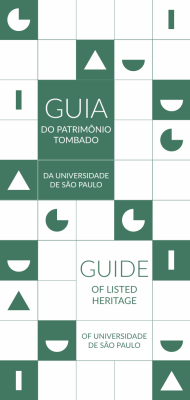Guide to the listed heritage of Universidade de São Paulo. 2.ed.
Keywords:
Patrimônio cultural, Universidade de São Paulo (Brasil), Patrimônio universitárioSynopsis
Universidade de São Paulo houses a diverse set of cultural assets like sites, artworks, collections and cultural references, playing a crucial role in teaching, research, and university outreach. These assets contribute to the construction and dissemination of knowledge as well as to the university’s daily life. This publication aims to provide an overview of the cultural heritage protected by preservation institutions at the federal, state, and municipal levels. It presents a revised and updated list of 32 protected assets, ten more than in the first Guide of listed heritage or on tentative lists published by CPC-USP in 2017. Since then, new university-owned buildings have been listed as heritage sites, while others, already protected, have come under USP’s ownership, totaling 28 built structures. Additionally, four collections of various types, protected as movable heritage at different levels, have been incorporated into this new listing. Among the listed assets, five are located within the Armando de Salles Oliveira Campus in São Paulo, 19 in other areas of the capital, and six in the interior and coastal regions of the state, across five different cities. A significant innovation in this edition is the presentation of assets throughout the guide. Within each of its three sections, organized geographically, the assets are presented in chronological order according to the date of their heritage designation — from the oldest to the most recent. In cases where an asset has been listed at multiple levels, the earliest designation date is considered. In addition to a basic information sheet, each asset is presented through a concise text, highlighting key aspects of its history, its most significant architectural features, and its current uses in light of the University’s contemporary activities. This compilation reveals a list of assets as diverse as their historical scope allows. With origins ranging from the 16th to the 20th century, they represent the ways of creating, building, living, and expressing of the various groups that conceived them. As public heritage and an inexhaustible source of research, USP’s listed assets are once again brought together in this guide — one that, fortunately, will continue to be updated in future editions.
Downloads

Downloads
Published
License

This work is licensed under a Creative Commons Attribution-NonCommercial 4.0 International License.


 Português (Brasil)
Português (Brasil)
 English
English
 Español (España)
Español (España)
 Français (Canada)
Français (Canada)
 Deutsch
Deutsch
 Italiano
Italiano



